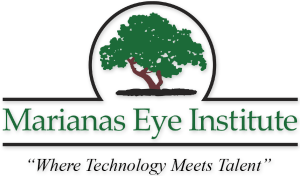(From the Marianas Variety)
Eye Worm Discovered
Marianas Eye Institute has made a significant discovery — a new live eye worm infiltrating the eyes of three residents of Saipan.
Any new parasite infecting humans is important, and the clinic’s findings were recently published in one of the premier scientific journals, American Journal of Ophthalmology, under the title, “A New Worm Infiltrating the Human Cornea.” Fortunately, it is a very rare condition, with only three patients having been found to have the worm over the past twenty years.
“This is a fascinating series of cases,” said Dr. David Khorram, the co-founder and prior ophthalmologist at Marianas Eye Institute. “When the first patient came into us in 1997 with a live worm in their eye, we knew we were seeing something never seen before. We weren’t sure what to do. We tried removing the worm which didn’t work; we tried killing the eye worm with a laser, but it didn’t die. Finally, with the help of Dr. Stephen Gee in Hawaii, a special technique was used to successfully extract the worm.” The doctors knew that it was an important case. But when the eye worm was handed off to the pathologist for analysis and identification, it was lost. “We were very disappointed, because we knew it was a new discovery. However, without the specimen, we could not identify the worm,” said Dr. Khorram.
Some years later, a second patient was found to have a similar worm — only 1.5 millimeters in size — living within the layers of the cornea, and causing redness and irritation of the eye. “The worm was successfully removed, but it was not intact, and again, we were unable to analyze or identify it,” said Dr. Khorram.
Marianas Eye Institute is contributing to scientific knowledge that helps doctors and patients all around the world. MEI photo
The third and final case came into Marianas Eye Institute in 2008. This time, the worm was removed intact, and successfully sent for analysis and identification. Because of the highly specialized nature of the case — a new unknown worm in the eye — the doctors sent the eye worm to the Armed Forces Institute of Pathology in Washington, D.C., and collaborated closely with the doctors there. “After the analysis, as well as after consultation with experts in human and veterinarian parasites, it became clear that this type of worm had never been seen in humans or animals before,” said Dr. Khorram.
The paper that the doctors published describes the details of each of the three cases, and shows that each eye worm was an isolated finding, with no other worms living in other parts of the body. All of the patients were young and healthy. It is not known how the worm entered the eye, but is speculated that it was likely introduced through an insect bite and grew within the body, migrating to the cornea.
The Saipan eye clinic has been preparing the paper for publication for over a year. “It has been a wonderful collaboration with five other doctors and experts from across the United States,” said Dr. Khorram. “We are very pleased that the American Journal of Ophthalmology accepted the paper for publication,” he said.
Dr. Khorram discussed the importance of the publication. “It is important for several reasons. First, the patients came to us with mild redness of the eye, irritation, and inflammation. These are very common symptoms. And before the publication of this paper, it was not known that a microscopic eye worm could be a cause of these symptoms. So when no other cause is identified, doctors will know to look carefully to ensure that there is not a worm causing the symptoms.” Dr. Khorram went on to explain further, “Second, the worms were all microscopic, and very difficult to see. We include photographs in the paper we published. Although these are the first three reported cases in the world, now that doctors know that a tiny worm can live in the cornea, we are certain that more cases will be found.”
(Click here to read the original article and more photos in the American Journal of Ophthalmology.)













